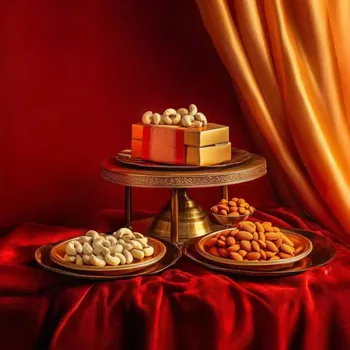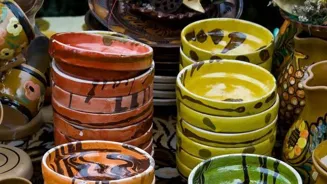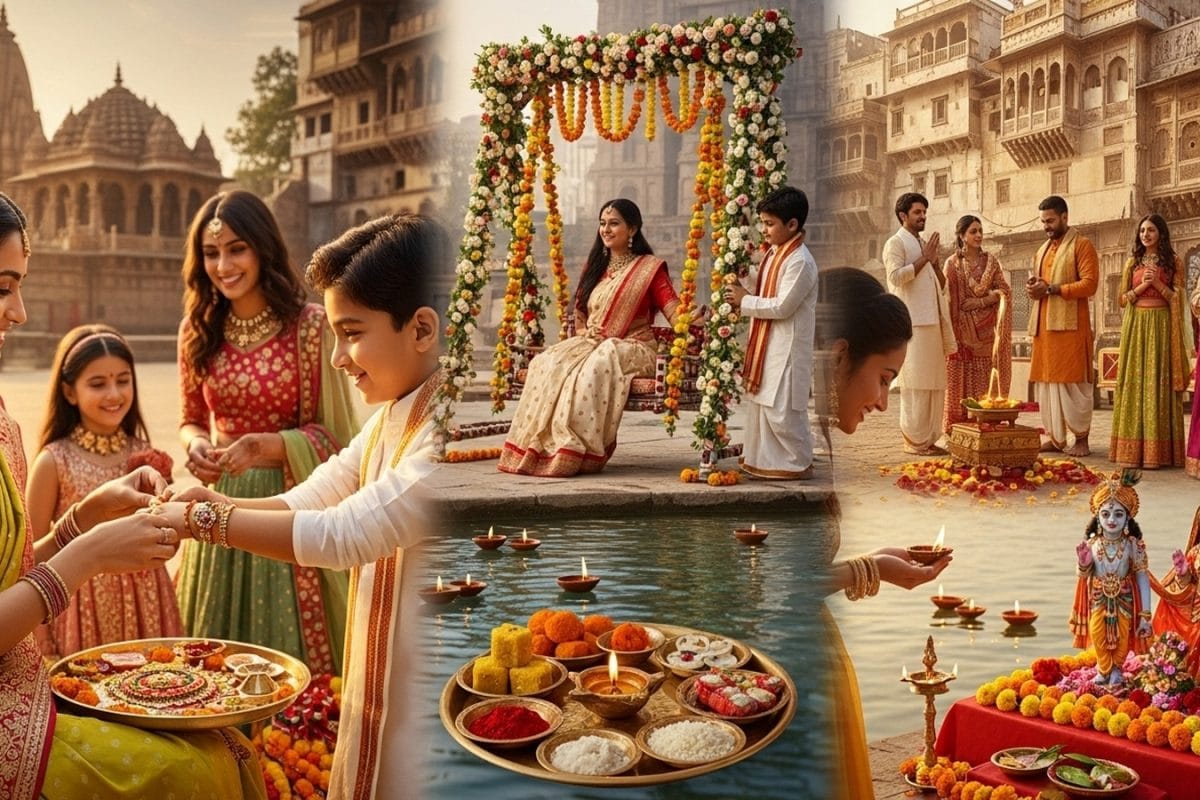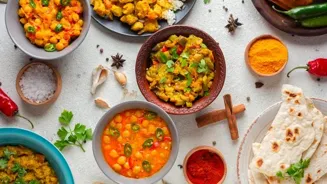Discover the magic of Diwali with 6 unique traditions that will illuminate your festival celebrations. Explore diverse customs from around India to make this Diwali truly unforgettable. Read more to light
up your festive spirit!
Diwali, the festival of lights, is just around the corner, bringing with it the promise of joy, togetherness, and vibrant celebrations.
While the core traditions of Lakshmi Puja, lighting diyas, and exchanging sweets remain central, why not explore some unique customs that can add an extra sparkle to your Diwali this year?
These traditions, practiced across different parts of India, offer a glimpse into the rich tapestry of our culture and promise a memorable festive experience. Let's dive into six such delightful practices that can light up your Diwali!
Govardhan Puja: A Tribute to Nature and Gratitude
While many associate Diwali solely with Lakshmi Puja, the day after Diwali, known as Govardhan Puja or Annakut, holds immense significance, especially in North India. This day is dedicated to Lord Krishna and is a beautiful expression of gratitude towards nature.

The story goes that Lord Krishna persuaded the people of Gokul to worship Mount Govardhan instead of Lord Indra, as the mountain provided them with resources and sustenance.
Angered, Lord Indra unleashed torrential rains, but Lord Krishna lifted the entire Govardhan Parvat on his little finger, providing shelter to the villagers and their cattle. This act demonstrated the importance of nature and the futility of arrogance.
On Govardhan Puja, families build a small hillock of cow dung, representing Mount Govardhan. This is then decorated with flowers and worshipped. The highlight of the day is the Annakut, a grand offering of various vegetarian dishes to the deity.
This offering symbolizes the rich bounty of nature and our dependence on it. Sharing the Annakut prasad with family, friends, and the community fosters a sense of togetherness and gratitude.
This year, consider making your own miniature Govardhan Parvat and preparing a special Annakut to connect with the spirit of the festival and express your thankfulness for all that nature provides.
It's a wonderful way to teach children about the importance of environmental consciousness and the stories behind our traditions. This will be a unique experience that you will cherish.
Dhanteras: Welcoming Prosperity with New Beginnings
Dhanteras, the first day of the five-day Diwali festival, is considered an auspicious time to purchase new items, especially gold and silver. The word "Dhanteras" is derived from "Dhan" meaning wealth, and "Teras" meaning the thirteenth day of the lunar fortnight.
It is believed that Goddess Lakshmi emerged from the ocean during the churning of the milky sea on this day, bringing prosperity and good fortune. Therefore, buying precious metals or new utensils on this day is considered a way to welcome wealth into the household.
However, the essence of Dhanteras goes beyond mere materialistic pursuits. It is also a time to reflect on our blessings and express gratitude for the wealth and well-being in our lives.
Many families perform Lakshmi Puja on Dhanteras, seeking the blessings of the goddess for a prosperous year ahead.
This year, as you celebrate Dhanteras, consider buying something that will bring lasting value to your life, be it a new skill, an educational resource, or something that supports a good cause.
This way, you can align the tradition with a deeper sense of purpose and make it a more meaningful celebration. Remember to do charity.
Bhai Dooj: Celebrating the Sacred Bond Between Siblings
Bhai Dooj, also known as Yama Dwitiya, is a heartwarming festival that celebrates the special bond between brothers and sisters. It falls on the second day after Diwali and is similar to Raksha Bandhan.
On this day, sisters pray for the long life and well-being of their brothers, and brothers, in turn, pledge to protect their sisters. The rituals involve sisters preparing a special meal for their brothers and performing a tilak ceremony, applying a vermilion mark on their foreheads.
In return, brothers offer gifts to their sisters as a token of their love and appreciation. The festival emphasizes the importance of family ties and strengthens the bond between siblings. If you have siblings, Bhai Dooj is a wonderful opportunity to express your love and gratitude for them.
Even if you are far away, you can connect virtually and perform the rituals or simply send a heartfelt message. This year, try to make Bhai Dooj extra unique. It would be fun even if they are your cousins or friends. Spend this day together with them!
Rangoli: Artistic Expressions and Auspicious Welcomes
Rangoli, the art of creating intricate patterns on the floor using colored powders, is an integral part of Diwali decorations. Rangolis are not just decorative; they are believed to bring good luck and prosperity to the household.
The designs often incorporate auspicious symbols, such as lotus flowers, swastikas, and geometric patterns, which are thought to invoke positive energy and ward off evil spirits. Rangoli making is a skill passed down through generations, and each region of India has its unique style and motifs.
Creating a Rangoli is a fun and creative activity that the whole family can enjoy. You can use traditional colored powders or opt for more modern materials like flowers, rice, or even paints.
The process of creating a Rangoli is meditative and calming, and the final result is a beautiful and welcoming sight for guests. This year, try experimenting with new Rangoli designs or incorporating elements from your own creativity.
You can even create a Rangoli competition within your family or neighborhood to make it even more engaging. It is a great way to explore the artist in you.
Lighting Diyas: Dispelling Darkness and Ignorance
The lighting of diyas, or small earthen lamps, is the most iconic symbol of Diwali. Diyas represent the triumph of light over darkness, good over evil, and knowledge over ignorance. The warm glow of these lamps illuminates homes and streets, creating a magical and festive atmosphere.
The act of lighting diyas also symbolizes the inner light within each of us, the light of wisdom and compassion that we must strive to cultivate. It may seem like a simple action but is filled with meaning and significance.
This Diwali, consider using diyas made from natural and sustainable materials. You can also decorate your diyas with paint, glitter, or other embellishments to make them even more special.
As you light each diya, take a moment to reflect on the darkness that you wish to dispel from your own life and the light that you wish to cultivate within yourself and for a better and prosperous year. Do it with family, friends, and loved ones.
This Diwali, let's all try to be a light for ourselves and bring light to other people's lives.
Exploring Regional Diwali Traditions: A Cultural Journey
Diwali is celebrated differently in different parts of India, each region adding its unique flavor to the festival. In West Bengal, Kali Puja is celebrated with great fervor on the same night as Diwali, while in South India, Diwali celebrations include oil baths and special sweets.
Gujarat celebrates Diwali with the Chopda Pujan, a ritual of worshipping account books and praying for business prosperity. Exploring these regional traditions can offer a deeper understanding of the diversity and richness of Indian culture.
This Diwali, take some time to learn about the Diwali traditions practiced in different states of India. You can read books, watch documentaries, or even connect with people from different regions to learn about their customs and celebrations.
You can also try incorporating some of these traditions into your own Diwali celebrations to make them more diverse and enriching. This will be a very learning experience as it is also a fun experience. Maybe try cuisines from other states. That would be wonderful!










